
Virtua Fighter is a fighting video game developed and published by Sega for arcades. It was developed for the Sega Model 1 arcade platform by AM2, a development group within Sega headed by Yu Suzuki. An early prototype version was location tested in Japan by August 1993, before the complete game was released worldwide in December 1993. It was the first arcade fighting game to feature fully 3D polygon graphics. The game was ported to Sega Saturn as a global launch title in 1994 and 1995, and also received a port to the Sega 32X.

Rise of the Robots is a fighting game released by Time Warner Interactive in 1994. Originally developed for the Amiga and DOS by Mirage's Instinct Design, it was ported to various video game consoles, including the Super NES, the Mega Drive, and the 3DO Interactive Multiplayer. The game includes a single-player mode in which the player assumes the role of the ECO35-2 Cyborg as he attempts to stop the Supervisor, who has taken over Electrocorp's facilities in Metropolis 4, and a two-player mode in which the second player controls a character chosen from among ECO35-2's enemies.
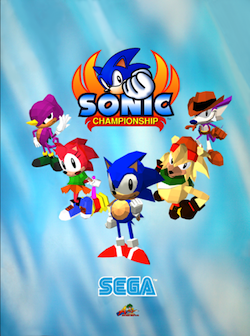
Sonic the Fighters, also known as Sonic Championship, is a 1996 three-dimensional fighting video game from Sega. The game, developed by Sega AM2 and built on their Model 2 arcade system, pits players in one-on-one battles with a roster of characters from the Sonic the Hedgehog series. Sonic the Fighters was made using the fighting engine for Fighting Vipers (1995), and it was the first 3D game in the Sonic series; the idea for a Sonic fighting game was conceived when a Sega AM2 programmer experimented with a 3D Sonic the Hedgehog model in Fighting Vipers, its animation impressing and convincing the Sonic Team to approve the project.

X-Men: Children of the Atom is a 1994 fighting game developed and published by Capcom and released on the CP System II arcade hardware. It was released in December 1994 in Japan and in January 1995 in North America and Europe.

Silpheed is a video game developed by Game Arts and designed by Takeshi Miyaji. It made its debut on the Japanese PC-8801 in 1986, and was ported to the Fujitsu FM-7 and DOS formats soon after. It was later remade for the Sega CD and has a sequel called Silpheed: The Lost Planet for the PlayStation 2.

Ghost in the Shell is a 1997 third-person shooter video game developed by Exact and published by Sony Computer Entertainment for the PlayStation. A part of the larger Ghost in the Shell media franchise, it utilizes the same English voice cast as the feature film of the same name, although the two do not share a story continuity. The game was released in July 1997 in Japan, December 1997 by THQ in North America and July 1998 in Europe. Soundtrack albums, an artbook and a guidebook were produced to accompany the game.

Knights of Xentar is an erotic role-playing video game published for MS-DOS compatible operating systems in North America by Megatech Software in 1995. It was originally published as Dragon Knight III (ドラゴンナイトIII) in Japan. It is part of the Dragon Knight series of games created by Japanese game developer ELF, who originally released the game for the NEC PC-9801 computer in 1991, followed by ports for the X68000 and PC Engine CD in 1992 and 1994. In addition to the regular version of the game, the PC port also has an "adult" version with more explicit nudity.
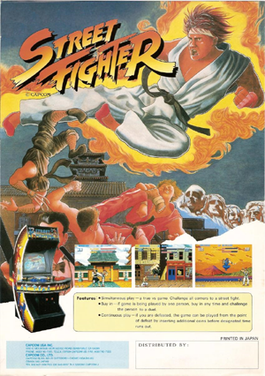
Street Fighter is a 1987 fighting game developed and published by Capcom for arcades. It is the first competitive fighting game produced by the company and the first installment in the Street Fighter series. It was a commercial success in arcades and introduced special attacks and some of the conventions made standard in later fighting games, such as the six-button controls and the use of command-based special moves.

Megatech Software was the first licensor of anime games in the United States, and the first licensor of hentai games or eroge in English.
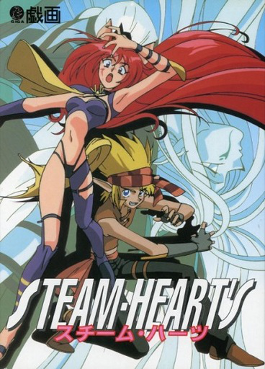
Steam-Heart's is a 1994 vertically scrolling shooter and eroge developed by Giga and published by TGL. The story follows two siblings as they fight off a virus that is possessing the people in their world. The game features shooter gameplay paired with ample erotic cutscenes with scantily clad women. Steam-Heart's was initially released on PC-98 personal computers on March 15, 1994; a version for the PC Engine Super CD-ROM² System was released in 1996 followed by another for the Sega Saturn in 1998, all of which were for the Japanese market. Critics generally found the gameplay to be average, with the erotic content being the sole distinguishing feature.

Brutal: Paws of Fury is a 2D fighting game published by GameTek in 1994. The game features a cast of various anthropomorphic animals as selectable fighters. It also features the ability to learn new attacks and save them via passwords. Originally a Sega CD exclusive, it was later ported to other game consoles.

Aggressors of Dark Kombat, known in Japan as Thrilling Intense March or GanGan, is a 1994 fighting arcade game developed by ADK and published by SNK. It was originally released on SNK's Neo Geo MVS arcade platform, then on Neo Geo AES and Neo Geo CD home consoles, and in later decades appeared on retro compilations and digital storefronts. The English game title uses the same initials as the developer. The game's defining feature was that, while it uses a generally 2D format, characters can move towards or away from the screen. While some reviews praised this mechanic, critics generally remarked that it offers no meaningful innovation and that the game is generic and lacking in depth. Though a modest success, Aggressors of Dark Kombat failed to match the popularity of the leading SNK fighters.
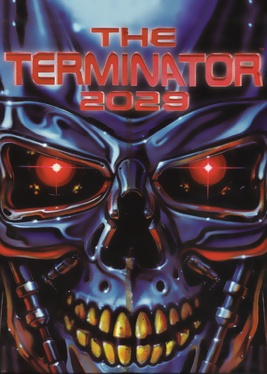
The Terminator 2029 is a first-person shooter video game developed and published by Bethesda Softworks. It is based on the Terminator film series, and was released in 1992 for DOS. It is Bethesda's second Terminator game following The Terminator (1991).
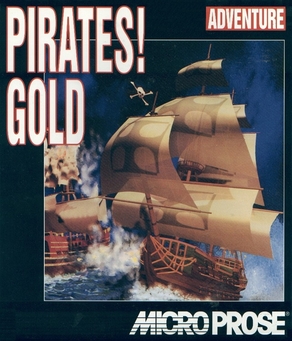
Pirates! Gold is a 1993 computer game, a remake to Sid Meier's 1987 release, Sid Meier's Pirates!

Cobra Mission: Panic in Cobra City is an MS-DOS adventure game published in 1992 in North America by Megatech Software as a port of the 1991 PC-98 Cobra Mission (コブラミッション) game by INOS. This was the first eroge released in English.

Dangerous Streets is a fighting game developed by Italian game studio Micromania and released by Flair Software for the Amiga, Amiga CD32, and MS-DOS in 1993. It was poorly received by critics. Dangerous Streets was bundled with the CD32 in The Dangerous Streets Pack.

P-47: The Phantom Fighter is a 1988 horizontally scrolling shooter arcade video game originally developed by NMK and published by Jaleco. Set during World War II, players control a Republic P-47 Thunderbolt fighter aircraft to face against the Nazis, who are occupying multiple countries around the world. Its gameplay involves destroying waves of enemies, picking up power-ups and new weapons, and destroying bosses. It ran on the Mega System 1 hardware.

Yū Yū Hakusho is a 1994 fighting video game developed and published by Tomy for the 3DO platform, based on the YuYu Hakusho anime.

Dragon Ball Z: Idainaru Son Goku Densetsu is a 1994 fighting video game developed by BEC and published by Bandai for the PC Engine Super CD-ROM² add-on. Based upon Akira Toriyama's Dragon Ball franchise, it is a retelling of Goku's seven major battles over the course of the series up to the conclusion of the Cell Games saga. Idainaru Son Goku Densetsu was created by most of the same team at BEC that would go on to work on Dragon Ball Z: Idainaru Dragon Ball Densetsu. The game received generally positive reception from critics who reviewed it as an import title but criticism was geared towards its difficulty level.

Gundam: Battle Assault is a 1998 fighting video game developed by Natsume Co., Ltd. and published by Bandai for the PlayStation. Based on the Gundam franchise, it is a follow-up to Gundam: The Battle Master (1997), which was released only in Japan. The plot involves Heero Yuy, protagonist of Mobile Suit Gundam Wing and pilot of the XXXG-01W Wing Gundam, on a mission to destroy remaining enemy Mobile Suits under command of Treize Khushrenada to stop a war from starting. Its gameplay consists of one-on-one fights, with a main six-button configuration, featuring special moves and two playable modes, while players can select any available mech to battle against enemies in story mode.





















